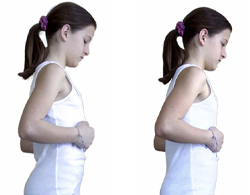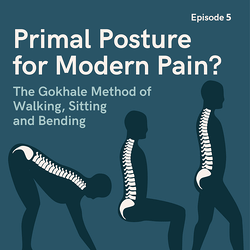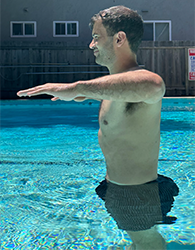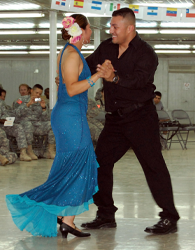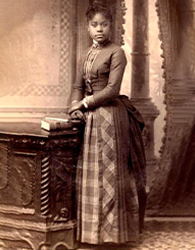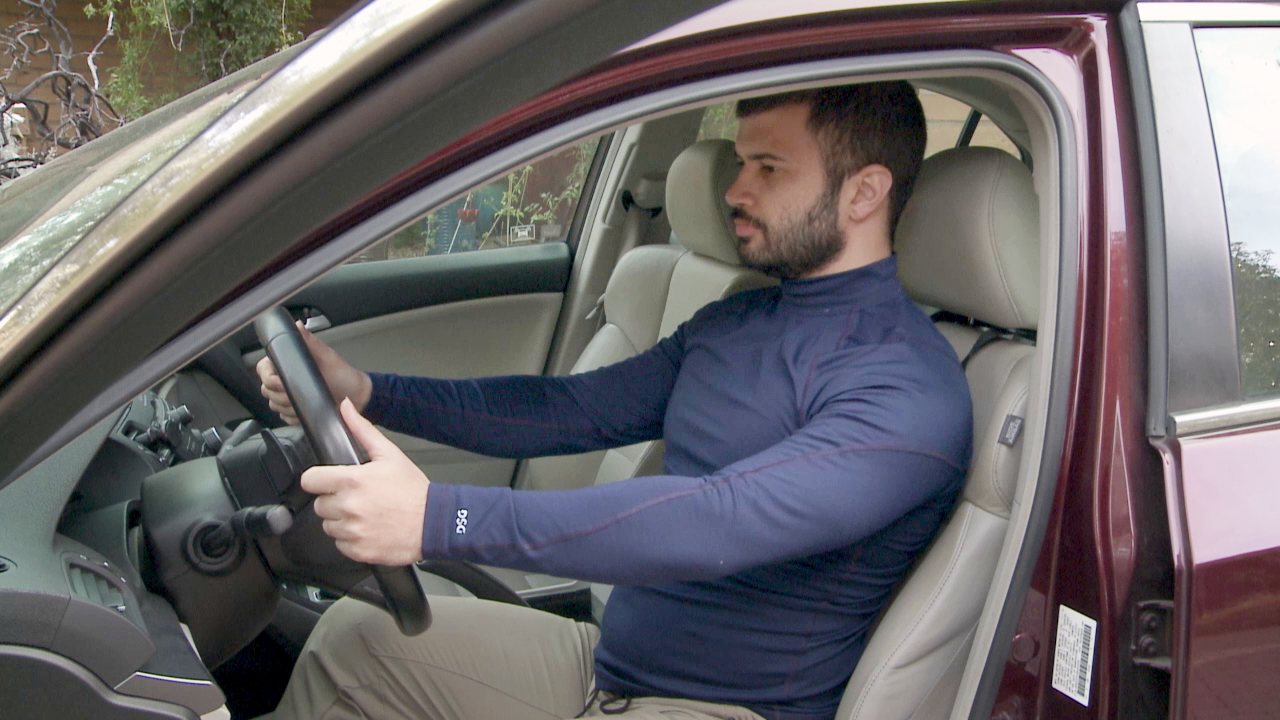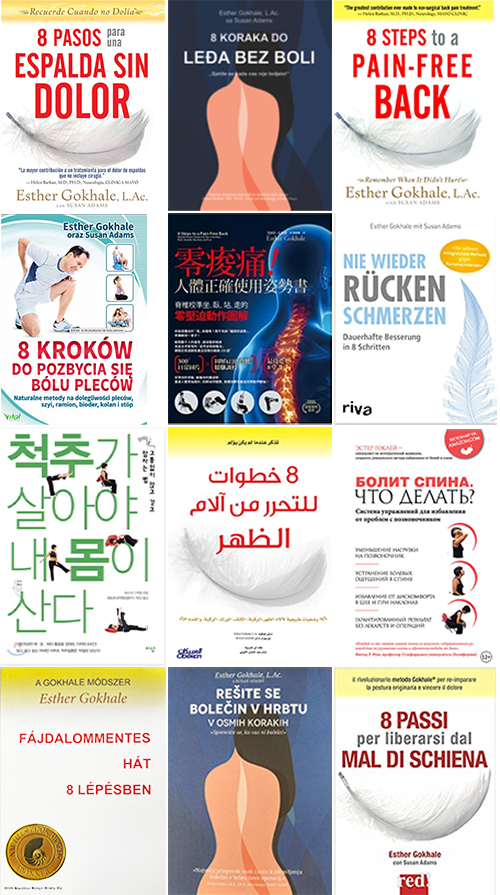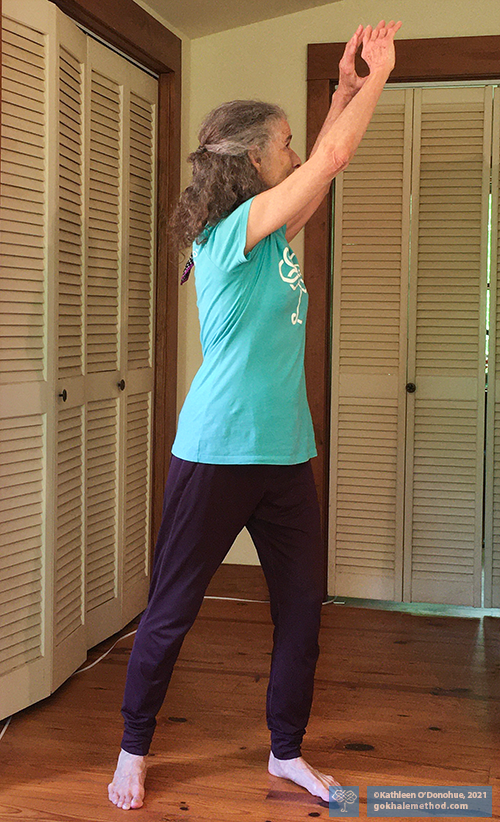Choose your remedies carefully
There are many approaches to stretching tight back muscles that involve rounding the back. Though these exercises give temporary relief, we recommend against them because they threaten the spinal discs, nerves, and ligaments. They can also result in the back muscles contracting even more tightly to stabilize the area.
My Three Favorite Posture Podcasts
Podcasts are one of my favorite media. It’s hard to reimagine a time when you couldn’t take your pick and enjoy their entertaining and compelling content. Over the years I have been invited to be interviewed for many podcasts about the Gokhale Method®, and for this blog post I would like to introduce you to three of my favorites, which I hope you will now enjoy if you haven’t done so already.
Posture Workouts in a Swimming Pool
August is peak holiday time across the northern hemisphere, and many of us who live here will find ourselves poolside, or even better, in it!
Being in water has the natural advantage of lifting weight off the joints while providing gentle resistance training. Aching backs or knees can find relief from compression in the natural buoyancy that water provides. This has made pool exercises a popular prescription with physical therapists over many years, especially for post-operative or post-injury rehabilitation.
On land, to relieve pain and compression, people usually use elaborate measures like inversion tables, traction units, or going to outer space! In the Gokhale Method we provide decompression for the lower back relatively simply with the Stretchsit® Cushion or the nubs on our Gokhale™Pain-Free Chair. But stepping into water is the simplest of all, giving you freedom of movement and the ability to strengthen yourself simultaneously.
Bachata for Trunk Mobilization and Stability
Regular readers and our students will know that I am a great fan of dance—it is a fun, social, and mood-elevating way to get fitter and master healthy posture.
Dance and the importance of length in the spine
The Gokhale Method® focuses on restoring the spine to its natural length, strength, and shape in all positions and activities. In vigorous activities like dance, with higher impact and distortions like twists, side bends, flexions, and extensions, the inner corset technique becomes especially important.
Outer Corsets and Inner Corsets
I have often written about the elegance of people in bygone years. The women, sometimes corseted, show striking deportment.
The excesses of nineteenth-century fashion understandably gave corsets a bad name. Extreme tight lacing had some terrible effects, imposing some drastic anatomical remodeling:
The stomach and liver are crammed down, with the ribs compressing into drooping S-loops. The neural spines of each vertebra, the little projections that stick up from the central body of each bone, are also pushed out of place. Normally they stack nicely one atop the other in a neat midline ridge, but in long-term corset wearers these spindles of bone jut to this side or that.
Science writer Brian Switek in Skeleton Keys: The Secret Life of Bone.
Secrets to Pain-Free Sitting, Part 2: The Making of a New TV Show
Welcome to the second blog post in which I am delighted to tell you more about our exciting recent TV project. If you missed it, you can read The Secrets of Pain-Free Sitting, Part1: The Inspiration behind a New TV Show here.
Getting the Gokhale Method out there
People are sitting poorly and continue to blame sitting for their back pain. And so we created Secrets to Pain-Free Sitting, a pledge show that the Gokhale Institute made with producer Frank Zamacona for American Public Television (APT). The solution to back pain has never been so urgently needed—and now, with our new 45-minute show, so available.
The Virtues of a Hard Copy Book in Digital Times
It has been 14 years since my book 8 Steps to a Pain-Free Back came out in hard copy. For years I had wished I had a book to send to those people who called me from the East Coast or Midwest. These were often relatives or friends of people I had worked with in California, who were suffering terrible back pain and needed help. And so I got writing.
A book to solve back pain
Although there was clearly a huge need for a book to solve back pain, I was still surprised to find I had written a bestseller. It reached number two on Amazon.com following our American Public Television program in 2011, and number three following the New York Times article (paywall) naming me “The Posture Guru of Silicon Valley” in 2013. It has now been published in 12 languages (Croatian later this year), and sold over 250,000 copies.
Home Exercises Part 4: Low Planks
This is our fourth blog post in the series where we put popular exercises under scrutiny to examine how they stack up—or not—against the principles of healthy posture. Here we are looking at “low plank,” a whole-body exercise that particularly develops abdominal strength and trunk stability.
Our model for the photographs is Eric Fernandez, our Gokhale Exercise teacher who teaches the Gokhale Method in the Philadelphia area.
Home Exercises Part 2: Crunches
This is our second blog post in the series where we put popular exercises under scrutiny to examine how they stack up—or not—against the principles of healthy posture. Here we are looking at crunches, a common abdominal exercise.
Crunches are often seen as a better targeted and safer
abdominal exercise than sit-ups—but there is still a downside.
Crunches are done lying down on the floor, face up, knees bent with feet on the floor, and with the hands placed behind or to the side of the head. They involve using the muscles of the rectus abdominis and the obliques to repeatedly raise and lower the upper body.
Crunches are well named—they crunch your discs and crunch your nerves. Lifting the
Gokhale Moving Meditation
In this blog post Gokhale Method teacher Clare Chapman interviews Roberta Cooks and Kathleen O’Donohue to find out more about their Gokhale Moving Meditation classes. Roberta and Kathleen have been Gokhale Method teachers for 11 and 5 years respectively—and longtime practitioners of Tai Chi Chih (Roberta), and Tai Chi Qigong (Kathleen).*

